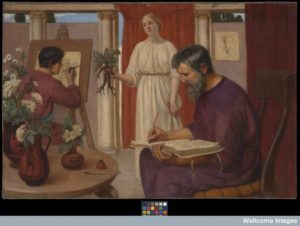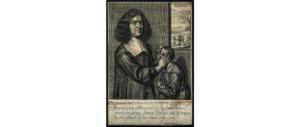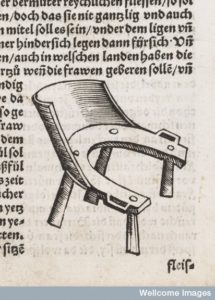
Early modern historians have long discussed whether people in the sixteenth and seventeenth centuries actively limited their family size. Dorothy McLaren has shown that women might extend the length of time for which they breastfed their babies in order to space pregnancies further apart, while Angus McLaren, Edward Shorter and others have explored in detail the use of abortifacients [substances that provoked abortion]such as rue, savin and ergot as a method of birth control.1 Of course early modern people could turn to the rhythm method (although their general understanding of women’s fertility meant the rhythm they were following would not have been much help) or they could abstain entirely in order to avoid falling pregnant. This last option clashed with many people’s ideas about marriage and sexuality. Sex was one means of regulating the bodies fluids – seed needed to be expelled in order to maintain health – this was one reason why people argued that celibacy was impossible for the priesthood. One of the expectations in marriage was that man and wife would show each other ‘due benevolence’ and indulge each others sexual passions, which again clashed with ideas of abstention.
According to early modern botanical texts their were herbal options that could be used to try to prevent pregnancy, rather than terminate. John Gerard’s Generall Historie of Plantes – a huge botanical volume – described several options

Mint according to the famed Greek physician and botanist Dioscorides, Gerard reported, could be ‘applied to the secret part of a woman before the act’ to hinder conception.
Similarly Axseed, or Hatchet Fitch could be mixed with honey and applied ‘before the act’ although in this case it wasn’t specified where or on who it had to be smeared, although presumably it was the woman.
Pliny meanwhile, apparently, noted that Spleen-wort hindered conception when either consumed inwardly or hung upon the body, therefore it was ‘not to be given to women because it bringeth barrennesse’.
Finally he listed Epimedium. He explained that, “This rare and strange plant was sent to me from the French Kings Hebarist Robinus, dwelling in Paris at the signe of the blacke head, in the street called Du bout du Monde, in English, The end of the world.” He described the look of the plant and where it grew before declaring that,
I have thought good to call it Barren woort in English; not because that Dioscorides saith it is barren both of floures and seed, but because (as some authors affirme) being drunke it is an enemie to conception. 2
Gerard’s Herball doesn’t necessary tell us whether anyone used these herbs to prevent pregnancy, and of course people were limited by where these plants grew; Gerard listed plants from all over Europe, not all of which were available in England. However, his book does show that information about herbal contraceptives was available if someone was so inclined and could access a copy of the rather large and expensive tome.
______________
- McLaren, Dorothy, ‘Marital fertility and lactation 1570-1720’, in Prior, Mary (ed.), Women in English Society 1500-1800, (1984; repr. London and New York, 1991), pp.22-53; McLaren, Angus, Reproductive Rituals: The perception of fertility in England from the sixteenth century to the nineteenth century, (London and New York, 1984); Riddle, John M., Contraception and Abortion from the Ancient World to the Renaissance (Cambridge, Mass., 1992); Riddle, John M., ‘Oral Contraceptives and Early-Term Abortifacients during Classical Antiquity and the Middle Ages’, Past and Present, No. 132 (Aug. 1991), pp.3-32
- John Gerard, The Herball or Generall Historie of Plantes (London, 1633), Mint, pp. 681-2; Hatchet Fitch, pp. 1234-6; Spleen-wort, p, 1141; Barren-wort pp. 480-1.



2 thoughts on “Preventing Pregnancy”
Comments are closed.